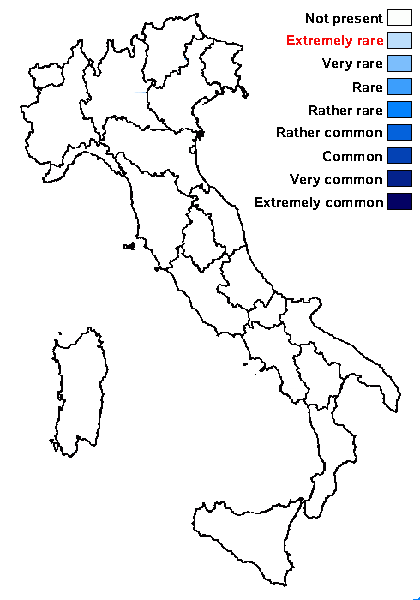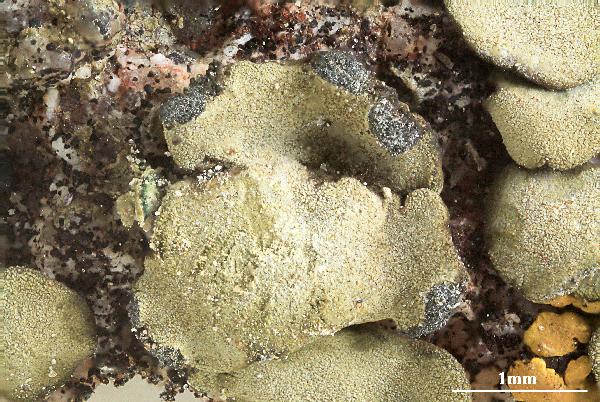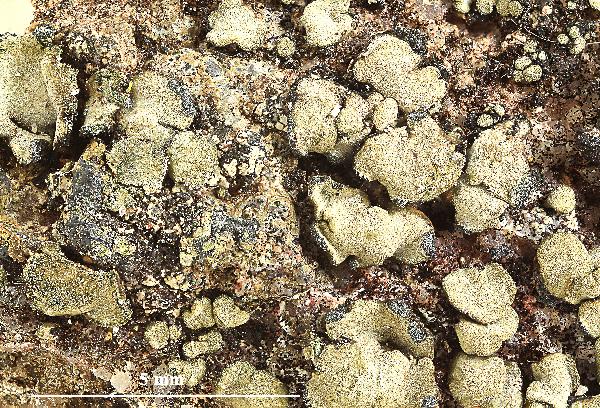Peltula farinosa Büdel
in Büdel & Lange, Cryptog. Bot., 4, 3: 263, 1994
Synonyms:
Distribution:
Description: Thallus foliose-umbilicate, of scattered, up to 25 mm wide, peltate squamules with undulate-sorediate margins, the upper surface grey-pruinose, the soredia farinose, dark grey to black; lower surface pale orange-brown, attached by a central holdfast. Upper cortex with numerous air spaces, 4.5-13 µm thick, with a 7-18 µm thick epinecral layer; medulla of loosely interwoven hyphae with elongated, 2-3.6 µm thick cells; photobiont layer clearly delimited in upper part, 55-100 µm thick; lower cortex paraplectenchymatous, 24-37 µm thick, of 3(-4) rows of 4.5-7.5 µm wide hexagonal cells. Apothecia very rare, immersed to subsessile, adnate, 0.2-0.5(-0.6) mm across, at first punctiform, then with an expanded, shiny orange-brown disc. Proper exciple poorly developed; epithecium yellowish brown; hymenium colourless, 140-220 μm high; paraphyses mostly simple, 1-3 µm thick; hypothecium colourless. Asci c. 100-spored, clavate to obclavate, unitunicate-rostrate with a distinct, fringed external tunica, the walls I+ red, K/I+ intensely blue. Ascospores 1-celled, hyaline, broadly ellipsoid to rarely almost bacilliform, 4-6(-8.5) x 3-4.5 µm. Photobiont cyanobacterial, chroococcoid, one-celled. Spot tests: K-, C-, KC-, P-, UV-. Chemistry: without lichen substances.Note: a species with a wide distribution in deserts and semi-deserts, which surprisingly was also found in Portugal and in the Central Alps (Switzerland). It grows on exposed calciferous siliceous rocks, mainly on calciferous schists. To be looked for in the Italian Alps, especially in the xerothermic valleys.
Growth form: Foliose, umbilicate
Substrata: rocks
Photobiont: cyanobacteria, coccaceous (e.g. Gloeocapsa)
Reproductive strategy: mainly asexual, by soredia, or soredia-like structures (e.g. blastidia)

Predictive model
Growth form: Foliose, umbilicate
Substrata: rocks
Photobiont: cyanobacteria, coccaceous (e.g. Gloeocapsa)
Reproductive strategy: mainly asexual, by soredia, or soredia-like structures (e.g. blastidia)

Predictive model




